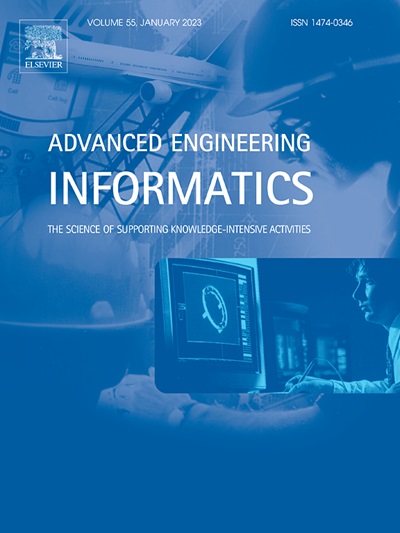Zero-shot fault diagnosis using soft semantic embedding of diffusion-encoded probability
IF 8
1区 工程技术
Q1 COMPUTER SCIENCE, ARTIFICIAL INTELLIGENCE
引用次数: 0
Abstract
Fault diagnosis is essential for ensuring the stable operation of industrial equipment. However, it faces significant challenges due to insufficient fault samples and the occurrence of unseen faults during operation. For this reason, a novel semantic embedding of diffusion-encoded probability (SEDEP) is proposed for zero-shot fault diagnosis (ZSFD) in this work. A diffusion-encoded convolutional autoencoder is first trained on abundant normal data to extract features for capturing essential fault patterns from raw data. A soft semantic learning network is then constructed using a Gaussian mixture model to generate probabilities as semantic representations. A variational autoencoder-based zero-shot learning framework incorporating cross-alignment loss and distribution-alignment loss is employed to accommodate diffusion-encoded features and soft semantic information. By training on normal data to increase inter-class distance among features and enhancing semantic representation through soft semantic learning, the proposed SEDEP has outstanding nature in ZSFD. Experiments on a benchmark bearing setup and a beam chopper bearing setup achieved accuracy values of 90.15% and 94.96%, respectively. This demonstrates its robustness across different fault scenarios. Compared to state-of-the-art methods, SEDEP provides a generalizable and effective approach for addressing ZSFD tasks.
求助全文
约1分钟内获得全文
求助全文
来源期刊

Advanced Engineering Informatics
工程技术-工程:综合
CiteScore
12.40
自引率
18.20%
发文量
292
审稿时长
45 days
期刊介绍:
Advanced Engineering Informatics is an international Journal that solicits research papers with an emphasis on 'knowledge' and 'engineering applications'. The Journal seeks original papers that report progress in applying methods of engineering informatics. These papers should have engineering relevance and help provide a scientific base for more reliable, spontaneous, and creative engineering decision-making. Additionally, papers should demonstrate the science of supporting knowledge-intensive engineering tasks and validate the generality, power, and scalability of new methods through rigorous evaluation, preferably both qualitatively and quantitatively. Abstracting and indexing for Advanced Engineering Informatics include Science Citation Index Expanded, Scopus and INSPEC.
 求助内容:
求助内容: 应助结果提醒方式:
应助结果提醒方式:


